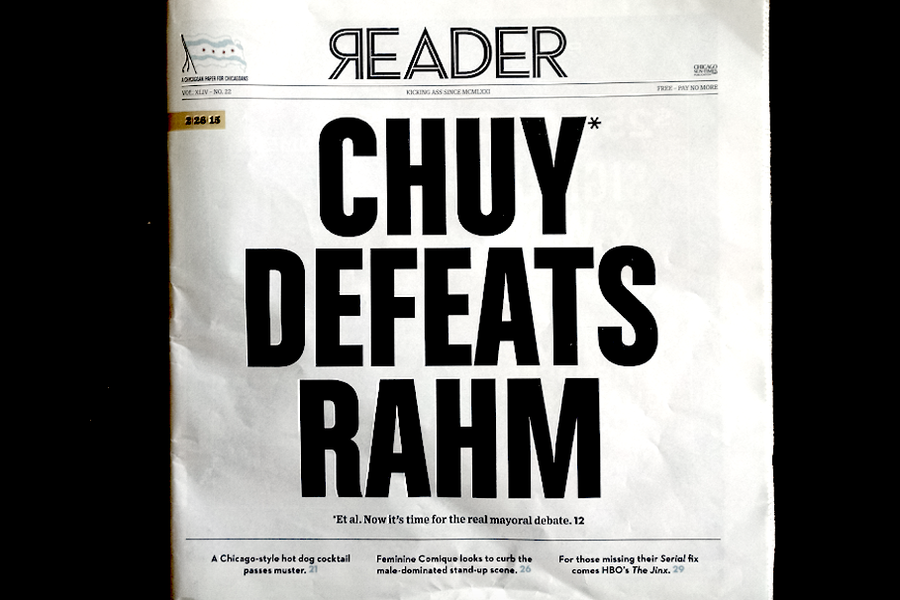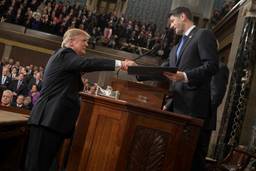Chicago Progressives: Examine the Election’s Numbers Before Patting Yourselves on the Back
The city’s progressives should claim no easy victories.
Marilyn Katz

Just as Chicago pundits were too facile and wrong when they declared the progressive movement a failure after last November’s defeat of Governor Pat Quinn, so too do progressives run the danger of misreading and misjudging the results of this week’s mayoral primary. Despite millions of dollars spent on Mayor Rahm Emanuel’s side, thousands of canvassers fielded on progressive challenger Cook County Commissioner Jesús “Chuy” García’s, and five televised debates, no one got to the real question on everyone’s mind: “What should Chicago’s future look like, and how will we get there?”
Yes, it was a massive embarrassment and loss for Mayor Emanuel—who, with a wall-to-wall $14 million media game, ended up spending around $66 for each vote that he received. And yes, it was a great accomplishment for García—who, with just over $1 million and a ground force of nearly 5,000, forced Emanuel into a runoff.
But before planning any inauguration festivities or even the campaign’s next steps, it’s important to look at the numbers through plain-hued glasses and carefully examine the facts of the election — and the possibilities and challenges ahead.
While thrilling to Chuy’s supporters and surprising to Chicago’s benighted political corps, Tuesday’s results were, in the main, not startling.
Voters in the wards that are, by design of the City Council, predominantly Hispanic provided Chuy with his biggest margin. In those wards, he bested Emanuel by garnering 53.04 percent of the vote compared to Rahm’s 34.63 percent.
Rahm, on the other hand, bested Chuy by a smaller margin in the predominantly white wards, winning 51.13 percent of the vote to Chuy’s 35.21 — a good showing for Chuy and reflective probably of a large number of union members and anger over the issues of which all are aware: school closures, a general anti-union stance, red light cameras and more.
And in the African-American wards, neither candidate broke 50 percent, with Emanuel garnering 42.65 percent of the vote, Chuy 24.74 percent and Willie Wilson around 23 percent.
The talk now among both activists and pundits is which candidate will capture the nearly 21 percent of the vote that went to Bob Fioretti, “Dock” Walls and Wilson, with crystal ball predictions of what the vote meant and whether it is in fact an “anyone but Rahm” vote that will naturally go to Chuy.
Yet that misses the biggest story of the day — and the biggest prize to be had for the runoff: the absence of voters in Tuesday’s primary.
Overlooked in the week’s coverage by all was the fall in vote totals since the gubernatorial elections in November. On Tuesday, 97,386 fewer African Americans and 90,880 less voters in the predominantly white wards voted than in the governor’s election. This drop is far greater than any dropoff in the recent past and stands in stark contrast to the Hispanic wards, where the total drop in votes was only 15,432.
The February election represented each candidate’s core voters, with the Hispanic wards clearly the only ones actually excited by the election — a reflection of both the popularity of only the third major Hispanic mayoral candidate ever in Chicago and discontent with how the mayor has governed thus far.
For the April runoffs, this means that there is little room for growth in the Hispanic vote but huge amounts of untapped or undecided votes in the predominantly African-American and white wards.
The big question will be not only how Fioretti’s, Walls’s and Wilson’s 97,054 votes break (or if they stay home, dissatisfied with either present choice), but can one of the candidates convince the more massive 204,698 voters who stayed home that they can best lead the city forward? The answer to that question remains far from clear.
Progressives have claimed great victories in the aldermanic races—and some were notable. But in fact, while labor and progressives continued to demonstrate the strength they showed in November, overall the results were not so clear.
Of the 10 wards where labor and Rahm (through his super PAC Chicago Forward) faced off directly, labor/progressives won (by forcing a runoff or winning outright) in five (10, 17, 35, 37 and 33, though whether the last will end up in a runoff or not is still in the air) and lost (their candidates either lost or were not in a runoff) in five (18, 25, 29, 46). In addition, four progressive incumbent aldermen either won outright (Muñoz and Waguespack) or made it to the runoffs (Arena).
Outside of the abysmal white and black ward turnouts, there were a few surprises on Tuesday. For one of the first times I can remember, the pre-election polling was almost spot-on throughout. Progressive and Hispanic voters came out strongly, building on their far stronger turnout in November and their victories across the city for the initiatives (millionaires’ tax and $15 minimum wage) that they had worked on the ballot in November.
Rahm found no such corresponding enthusiasm and chose to run a media campaign with virtually no ground game; his el stop visits did not really make up for door-to-door, unstructured, real interaction with Chicago’s residents.
Rahm ran on his laundry list of accomplishments, Chuy and the others on the real but worn issues of red-light cameras, school closures, community safety and neighborhoods feeling left behind.
While good enough to get both candidates into a runoff, neither candidate’s current strategy is enough to guarantee a win in April.
There is no question that there is discontent — and, more to the point, real fear — in Chicago about the present and the future. Not only is the city broke, but it has lost hundreds of thousands of jobs, is becoming more divided by income and is becoming poorer. Today, there are only six communities out of 78 where the per capita income is greater than $50,000, while there are 38 communities where per capita income is $20,000 or less each year (the national poverty line being $23,000) and 65 where that number is $35,000 or less.
Unemployment has eased, now down to 5.6 percent according to the Bureau of Labor Statistics. But most new jobs are in the minimum wage service/retail or health care sectors, and unemployment in the predominantly African-American communities remains at 25% and 12% for Latinos.
Not only are these numbers indications of misery experienced by huge numbers of residents — this increased poverty actually threatens Chicago’s future, diminishing the tax base that is necessary to fund the city services, education and investments that make a city viable and sustainable.
The candidate who wins will have to go beyond laundry lists of accomplishments or simple complaints about one policy or another. The candidate who wins will have to present a vision of a future of Chicago — and a real strategy of how we can get there.
That’s a challenge that neither candidate nor the forces behind them have yet met.
Correction: An earlier version reported that alderman Sposato (38th) was in a runoff election. He won his seat outright.








